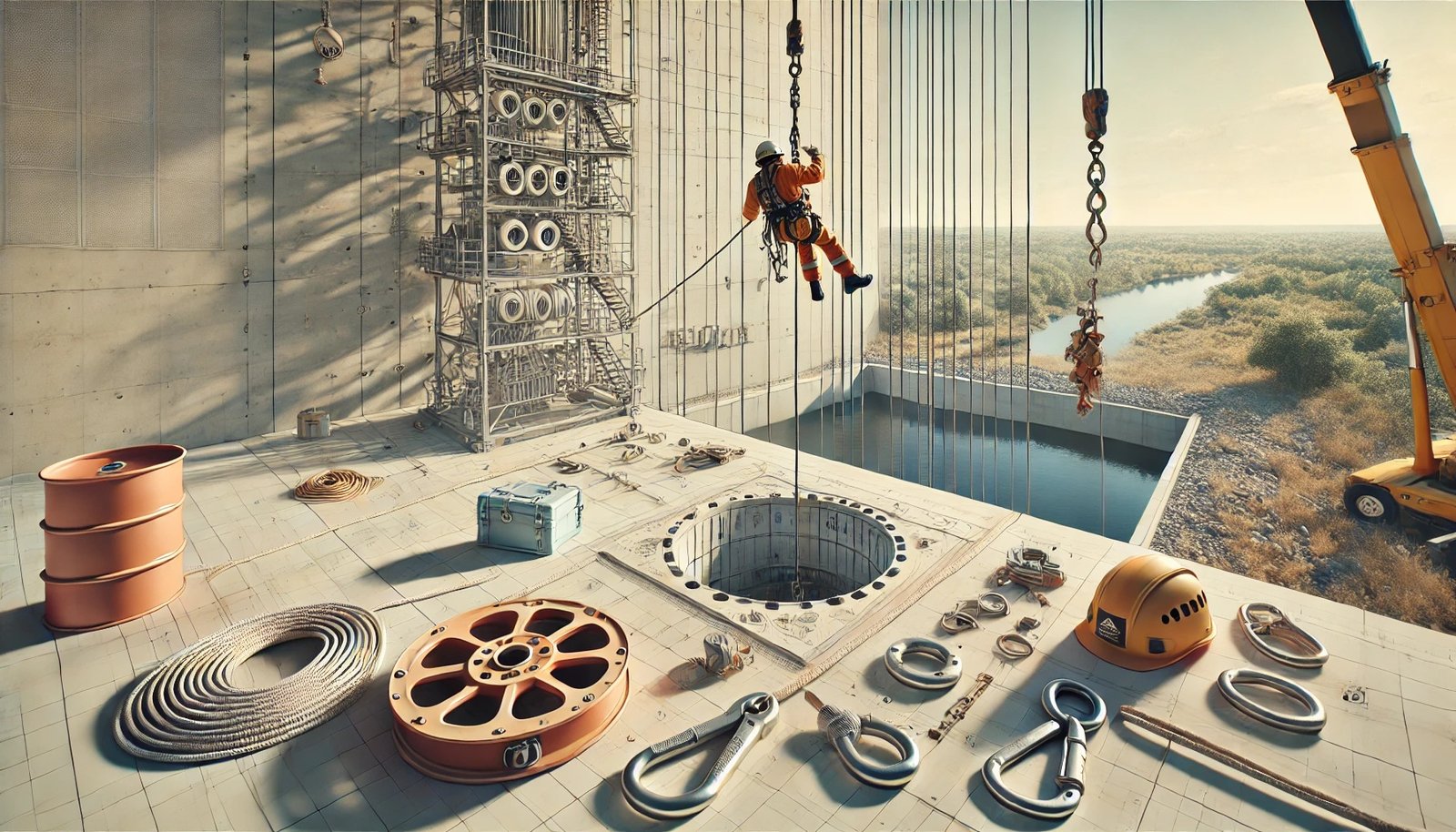OBJECTIVES
Upon completion of this lesson, you will become familiar with:
- Define the Load Management.
- List the six equipment that are used in Load Management System.
- Describe the procedure of the Load Management System.
- Describe the Safety measures of the Load Management System.

Definition
This technique is used to evacuate the victim from a confined space. The confined space may be located at any angle (vertical/horizontal). It consists of a mechanical advantage system with proper control and a braking system.
Load management involves the systematic distribution and control of weight and force during rescue operations to ensure safe and efficient victim extraction. It is crucial in confined space rescues, high-angle rescues, and other technical rope operations.
Equipment Used
The following equipment is essential for a load management system:
- Ascender – A mechanical device used to grip the rope for ascending.
- Karabiner – A metal loop with a spring-loaded gate used to connect components securely.
- Full Body Harness – Worn by the rescuer and victim for secure attachment.
- Figure of Eight – A descender device used for controlled descent.
- Rope (minimum 100-meter length) – High-strength rope for rigging and support.
- Rope Roller or Edge Protector – Prevents rope damage over sharp edges.
- Cords for Prusik Knot – Friction hitches used for rope grabs and safety backups.
Proper inspection and maintenance of equipment are critical before any operation.
Rescue Method
The step-by-step procedure for load management in rescue operations is as follows:
- Ensure PPE always – All personnel must wear appropriate personal protective equipment.
- Select two appropriate/distant anchor points – These must be strong and stable.
- Hook pulleys with both anchor points – Ensures smooth rope movement.
- Pass the rope through these pulleys – Creates a mechanical advantage system.
- Make a loop on the working end – The rescuer will use this end for control.
- Apply two Prusik knots before the 2nd pulley forward of the working end – Provides friction and safety control.
- Secure one Prusik with the anchor of the 2nd pulley – Controls the movement of the working end.
- Pass the standing part through another movable pulley – Attached to the 2nd Prusik knot for mechanical advantage.
- The descent of the rescuer will be done like a belay system – Ensures controlled lowering.
- The ascent will be possible by pulling the standing end – Movable pulleys assist in lifting.
- Adjust the movable pulley manually as needed – Maintains tension and control.
- A rescuer will operate both Prusik knots – Ensures smooth operation.
- Double or triple pulleys can be used for greater mechanical advantage – Increases lifting efficiency.
- Establish another anchor with a figure of eight – Acts as a safety brake during ascent/descent.
Safety Measures
If the operation is conducted at height, follow these safety measures:
- Always ensure PPE – Helmet with strap, leather gloves, goggles (optional), face mask (optional), knee pads, elbow pads, safety shoes, full body harness, and a safety belt or bowline for self-securing.
- Climb safely to the platform/tower – Use proper ladder or climbing techniques.
- Ensure the platform is stable – Check for structural integrity before use.
- Mark a 2-foot danger zone around the platform – No unauthorized personnel should stand here. Use walkie-talkies or kneel to communicate within this zone.
- Selection and application of knots must be accurate and firm – Improper knots can lead to failure.
- Ensure all lines are tied securely – Double-check all connections.
- Prusik knots must be in the right direction – Ensures proper friction and grip.
- Maintain proper pulley sequence – Incorrect rigging reduces efficiency and safety.
- Perform a safety check before activity – Verify all systems before operation.
- Keep hands clear during pulling – Prevents pinch injuries.
- Use radio sets for communication – Clear and constant communication is vital.
- Ensure comfort for both patient and rescuer during ascent/descent – Avoid sudden movements.
- Be mindful of rope dressing during knot tying – Proper alignment prevents slippage.
By following these guidelines, rescuers can ensure a safe and effective load management operation in confined or high-angle spaces.
Final Words
The Load Management System is a critical technique for safe and efficient rescues in confined or high-angle spaces. By using the right equipment—such as pulleys, ropes, harnesses, and Prusik knots rescuers can create a mechanical advantage system for controlled lifting and lowering. Proper anchor selection, secure knot tying, and strict adherence to safety measures ensure successful operations while minimizing risks.
Clear communication, PPE compliance, and systematic procedures are vital for both rescuer and victim safety. Whether in vertical or horizontal spaces, mastering these methods enhances rescue effectiveness. Always prioritize training, equipment checks, and teamwork to execute load management flawlessly in emergency scenarios. Stay prepared, stay safe.

Emma Lee, an expert in fire safety with years of firefighting and Rescuer experience, writes to educate on arescuer.com, sharing life-saving tips and insights.
